Stretching exercises: a guide for everybody
Stretching is often the part of exercise that is overlooked or skipped. But everybody – young and old – can benefit from it. Even stretching for 10 minutes a day can make sitting, standing and movements much more comfortable.
Benefits of stretching
If we don’t stretch, there’s an increased chance of joint and muscle pain. But regular stretching can:
- Increase flexibility
- Improve your range of motion in our joints
- Lengthen our muscles
- Ease muscle tension
- Increase blood flow
- Improve posture
How to stretch
Stretching too quickly or incorrectly can do more harm than good. With this in mind, it’s important that stretching is done in slow, careful movements, taking long, deep breaths as you do so.
You should aim to hold each of the stretches described below for at least 30 seconds. However, if this is uncomfortable, take it down to 20 or even 10 seconds. As your flexibility improves, you can extend the amount of time you spend stretching but try not to spend any more than two minutes on one stretch.
You can also do these stretches anywhere – from outdoors to the gym or at home. Home stretching is great for those who have a spare 10 or 20 minutes and it can incorporate furniture, like a chair or sofa, so no gym equipment is needed.
Within this stretching guide, you’ll find:
- Stretching for beginners: these stretches are perfect for those who are just starting out.
- Lower back, hamstring and hip flexor stretches: these stretches focus on target areas that many people have problems with or are tighter than other parts of the body.
- Split stretches: these stretches will help you achieve a split pose.
- Stretching for seniors and kids: these are stretches are tailored to specific stages of life in which our mobility varies as well as certain areas of the body that need to be focused on.
Stretching for beginners
These super-simple stretches are perfect for those who haven’t done any stretching before.
Side stretch
Stand with your feet together and your arms above your head with your hands clasped. Keeping your chin up and your back straight, slowly bend your upper body to one side, hold then swap.
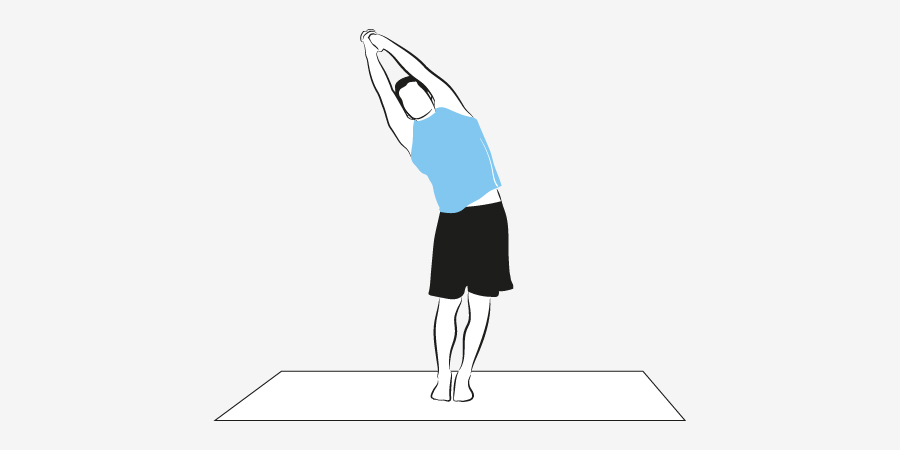
Standing quad
Stand with your feet together and bend one leg back so your heel is aiming towards your behind, holding your foot with your hand. Focus on a spot or use a surface for balance – swap sides.
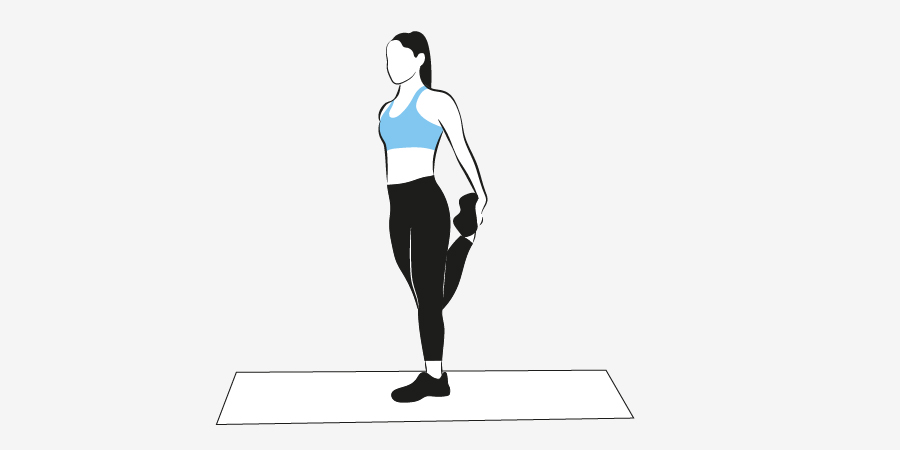
Stretches for the lower back
Back problems are very common due to the amount of time many of us spend sitting at a desk or inactive while relaxing. These stretches can help to lengthen the muscles in your back and strengthen the muscles in-between the vertebrae to ease the pressure on your spine.
Child's pose
Kneel on the floor, sit on your heels and bend forward from the hips. Reach your arms out in front of you and breathe into the stretch.
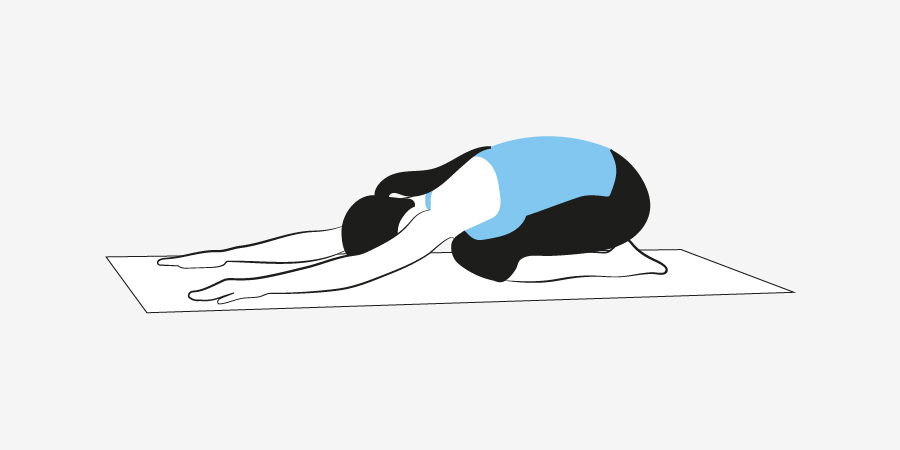
Knee to chest
Lay flat on your back with your legs stretched and bring one knee to your chest, keeping the other leg straight and your back pressed to the floor – swap sides.
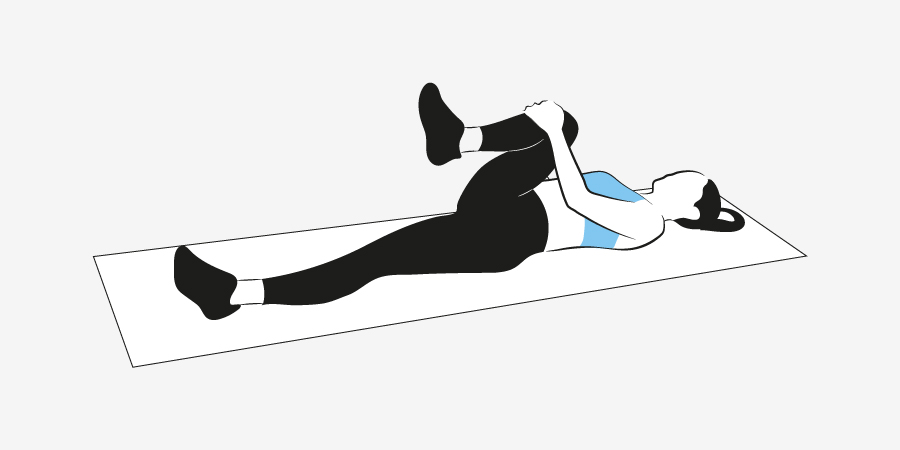
Hamstring stretches
The hamstring muscle is located at the back of your thigh and can become tight if not stretched regularly.
Stand with your legs slightly apart. Place one foot out in front of you and bend the other leg. Slowly lean forward, keeping your back straight. Switch sides and repeat.
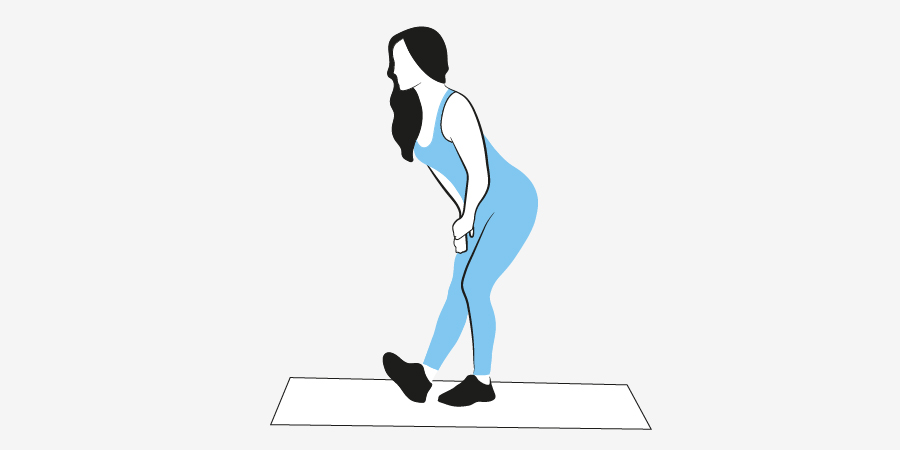
Hip flexor stretch
A hip flexor stretch increases the range of motion in the muscles located at the top of your legs, your groin and around your hips.
Start by kneeling on one knee, with the opposite foot flat on the floor in front of you and your leg bent, making sure your knee is parallel to your heel. Lean your hips forwards and towards the floor then squeeze your bum slightly. Hold this for at least thirty seconds if able then swap sides and repeat.
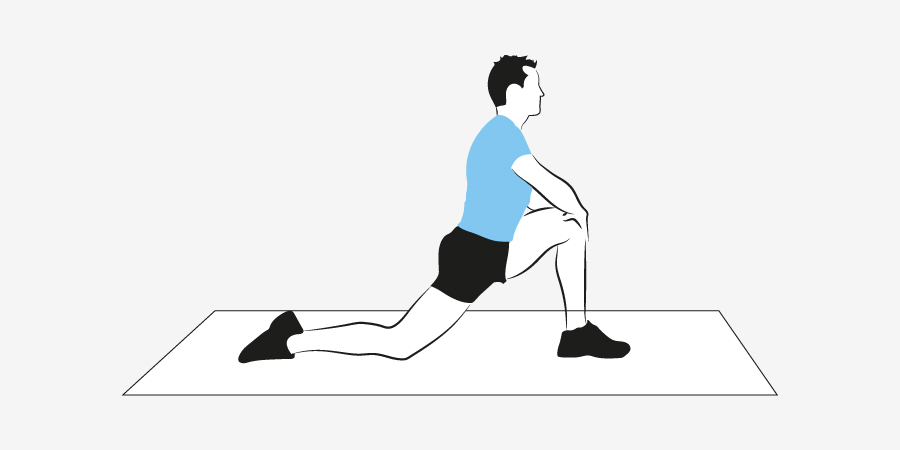
Split stretches
Split stretches help to loosen the muscles along the inner thigh and, done regularly, can help you achieve a full split pose. These stretches target particularly tight areas of the body, so if you’re going to try them ease yourself in gently.
Split stretches aim to lengthen and loosen your hamstrings as much as possible, so any hamstring stretches will help with the splits.
Seated forward bend
Sit with your legs straight out in front of you with your feet flexed. Lengthen your spine and bend forward, reaching your hands towards your feet and keeping chest high to avoid rolling your back. Hold for up to 30 seconds or slightly longer if possible.
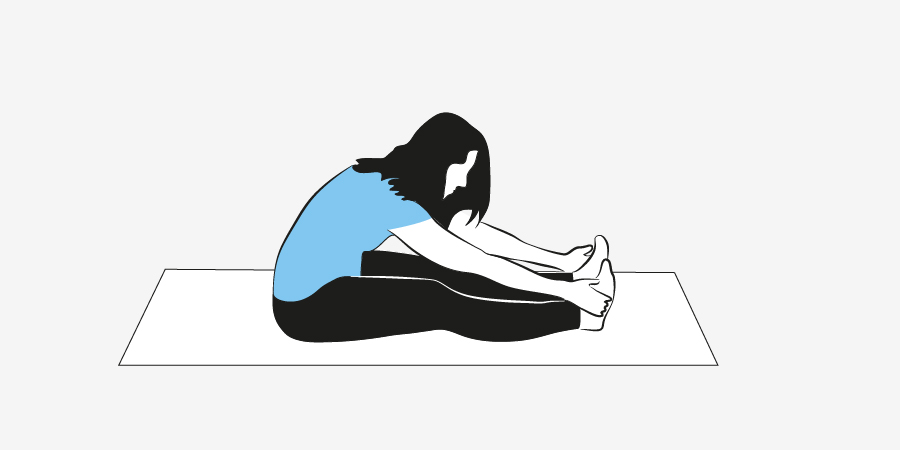
Half splits
Kneel on the floor and place one leg straight out in front of you with your foot flexed, then bend forward as far as you can keeping your back straight.
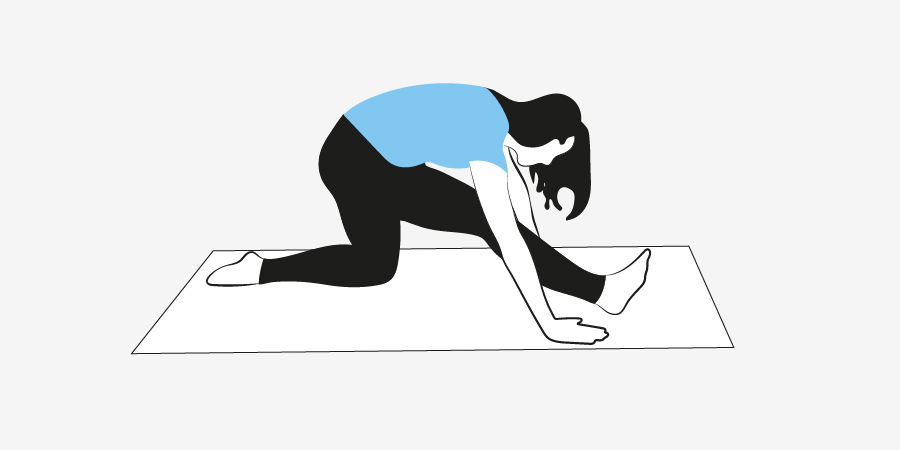
Reclined pigeon
Starting on your back, bring one foot to the opposite knee so that your leg is folded. Bring your hands behind your knee and gently pull.
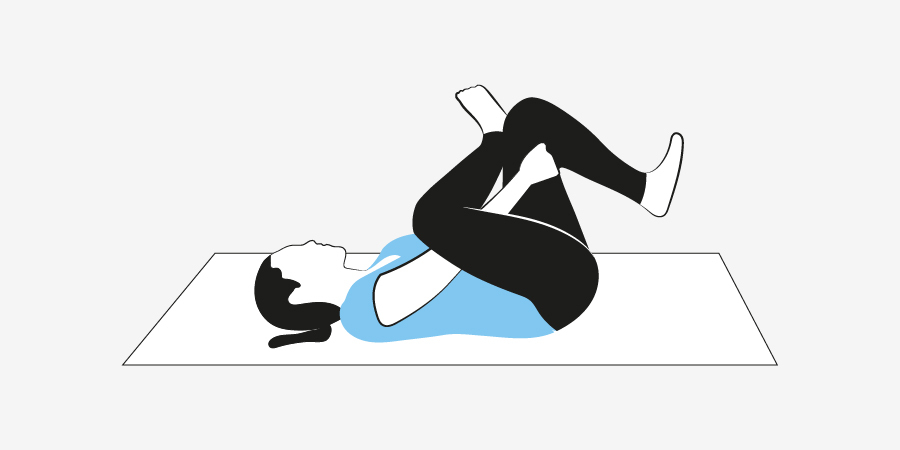
Wrist stretches
Despite its size, the wrist is one of the most used joints in the body. Gently bending your wrist forward and back can alleviate some of the tension that builds up in the joint.
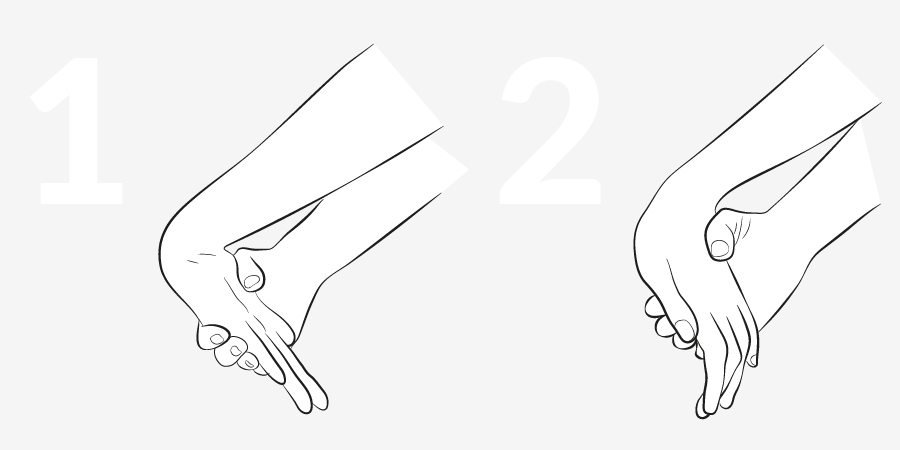
Stretching for seniors
As you get older, everyday movements such as bending down to pick something up or standing up from a low seat become increasingly difficult. The earlier you integrate stretching into your daily routine, the longer these movements will remain easy to accomplish.
Seniors who are flexible should be able to accomplish the above stretches, but if mobility is limited try the wrist stretches as well as these simple stretches.
Shoulder rolls
Sitting down, lift your shoulders up to your ears and roll back down. Repeat 10 times.
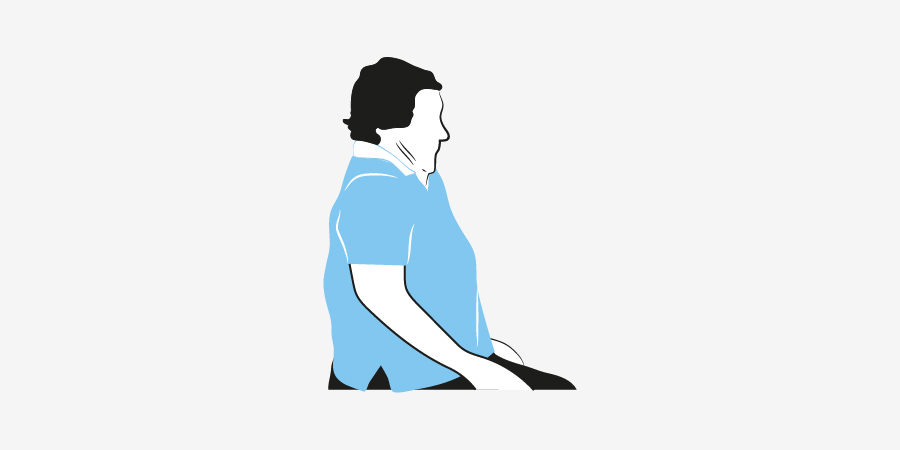
Neck side stretch
Put one arm behind your back. Place the other hand to the side of your head and gently tilt to the side. Hold for 10 seconds.

Stretching for kids
Daily physical activity is important for kids and this means they should be stretching, too. Some kids may find concentrating on stretches hard and the slow movements boring. To help, here are some ways you can turn stretching into fun games for kids:
- Mirroring – take some of the stretches above and ask the child to mirror your actions. Then swap so they are the one who is conducting the movements.
- Stand perfectly still – ask the child to do a stretch and stand very still as they do it – any movements or wobbles and they’re out!
- Animals – many of these stretches look like animals poses, such as the giraffe-like side stretch or the flamingo-like quad stretch. Kids can pretend to pose like these animals while performing the stretch.